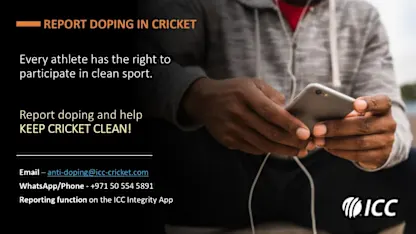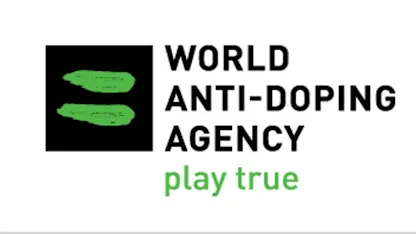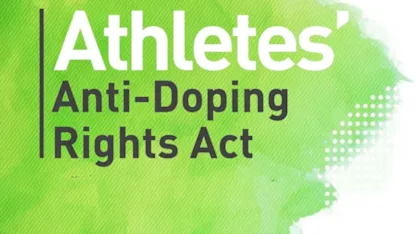Integrity
Anti-Doping
ICC Anti-Doping Code
The ICC became a signatory of World Anti-Doping Agency (WADA) in July 2006
The ICC Anti-Doping Code compliant with the WADA Code ensures cricket plays its part in the global fight against drugs in sport. Through the adoption and implementation of the ICC Anti-Doping Code, ICC continues in its efforts to:
(a) maintain the integrity of the sport of cricket
(b) protect the health and rights of all participants in the sport of cricket
(c) keep the sport of cricket free from doping
ICC Anti-Doping Code - effective 1 Jan 2021
ICC Anti-Doping - Player Consent and Agreement Form
National Cricket Federation's Anti-Doping rules template - effective 1 Jan 2021
ICC Whereabouts Requirement for Out of Competition Testing – eff 15 June 2024
The 2026 Prohibited List (effective 1 January 2026)
ICC Anti-Doping Reporting and Whistleblowing Policy
PROHIBITED LIST
The World Anti-Doping Agency (WADA) Prohibited List is an international standard identifying substances and methods prohibited in sport. WADA is responsible for the preparation and publication of the List, which it updates every year effective January 1.
Athletes should be aware of the classes of substances that are on the Prohibited List and should be careful to check the status of any medication they consume to ensure that it won’t result in a positive test.
For a substance or method to be added to the prohibited list it must meet at least two out of three of the following criteria:
- There is evidence that the substance or method has the potential to enhance, or does enhance performance,
- There is evidence that the substance or method represents an actual or potential health risk to the athlete, and
- WADA has determined that use of the substance or method violates the spirit of sport.
Summary of major modifications to the WADA 2025 Prohibited List (effective 1 January 2025)
The WADA 2025 Prohibited List (effective 1 January 2025)
Tramadol - Factsheet for Medical Professionals
Tramadol – Factsheet for Athletes and Support Personnel
2024 Monitoring Programme (effective 1 January 2024)
2023 International Standard for Therapeutic Use Exemptions (ISTUE)
2023 International Standard for Results Management (ISRM)
2023 International Standard for Testing and Investigations (ISTI)
DOPING CONTROL
The ICC conducts doping control in order to protect the sport of Cricket from doping and ensure Cricket remains clean. Doping Control is the process of testing cricketers for the use of prohibited substances or methods by collecting urine and/or blood samples. The selection of cricketers may be random or targeted.
SUPPLEMENTS
Every cricketer is personally responsible for any prohibited substance found in their sample. The supplement industry is not governed by strict regulation unlike the pharmaceutical industry therefore making it close to impossible for anyone to confirm whether or not a supplement product contains prohibited substances. Cricketers are therefore encouraged to strongly consider the risks of using supplements before doing so and exercise extreme caution if choosing using supplements.
Advisory note – Use of Supplements
REPORT DOPING IN CRICKET

Report doping in cricket
The ICC is committed to protecting the integrity of cricket and protecting the rights of the clean player which include the right to participate on a level playing field. Keeping cricket clean is everyone’s responsibility. Any suspicion of doping in cricket should be reported to the ICC. For more information on how to report confidentially to the ICC, please refer to the ICC Anti-Doping Reporting and Whistleblower policy. Every piece of information matters. Do not hesitate to come forward and share the information you have.
ICC Anti-Doping Reporting and Whistleblower policy
WADA DOCUMENTS

World Anti-Doping Agency (WADA)
The World Anti-Doping Agency (WADA) was established in 1999 with the intention of tackling the growing problems of drugs in sport. WADA’s mission is “to lead a collaborative worldwide movement for doping-free sport”. The World Anti-Doping Code, which establishes a standardized, consistent set of anti-doping rules to be applied worldwide, was first introduced in 2004 and later revised in 2009 and in 2015. A further revised version of the Code comes into effect on 1 January 2021.
Summary of the major changes to the 2021 World Anti-Doping Code
The World Anti-Doping Code (Code) works in conjunction with the following eight International Standards that aim to foster consistency among anti-doping organizations in various areas.
International Standards | World Anti-Doping Agency (wada-ama.org)
ATHLETE’S ANTI-DOPING RIGHTS ACT

Athletes' Anti-Doping Rights Act
On 18 June 2020, the Agency published the Athletes’ Anti-Doping Rights Act, which was approved by WADA’s ExCo during the World Conference. The Act, which was developed by WADA’s Athlete Committee in consultation with thousands of athletes and stakeholders worldwide, is based on the 2021 Code and Standards and aims to ensure that athlete rights within anti-doping are clearly set out, accessible, and universally applicable.